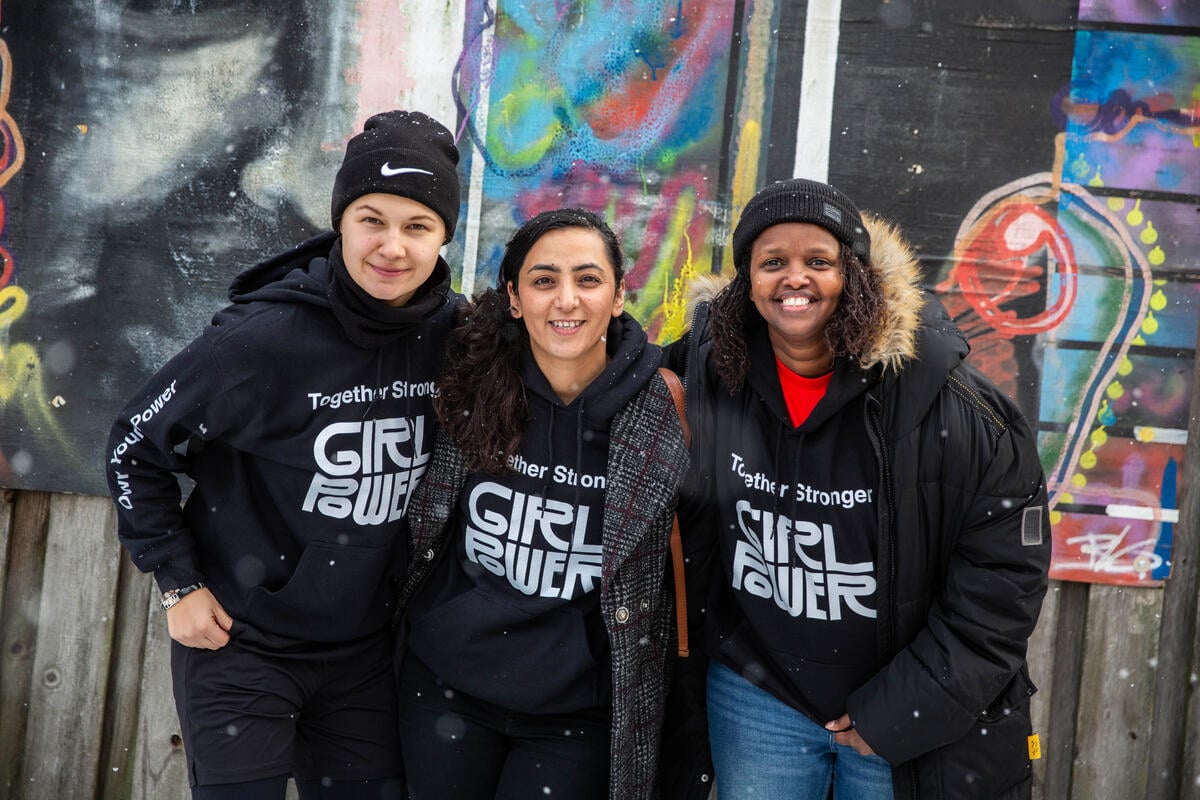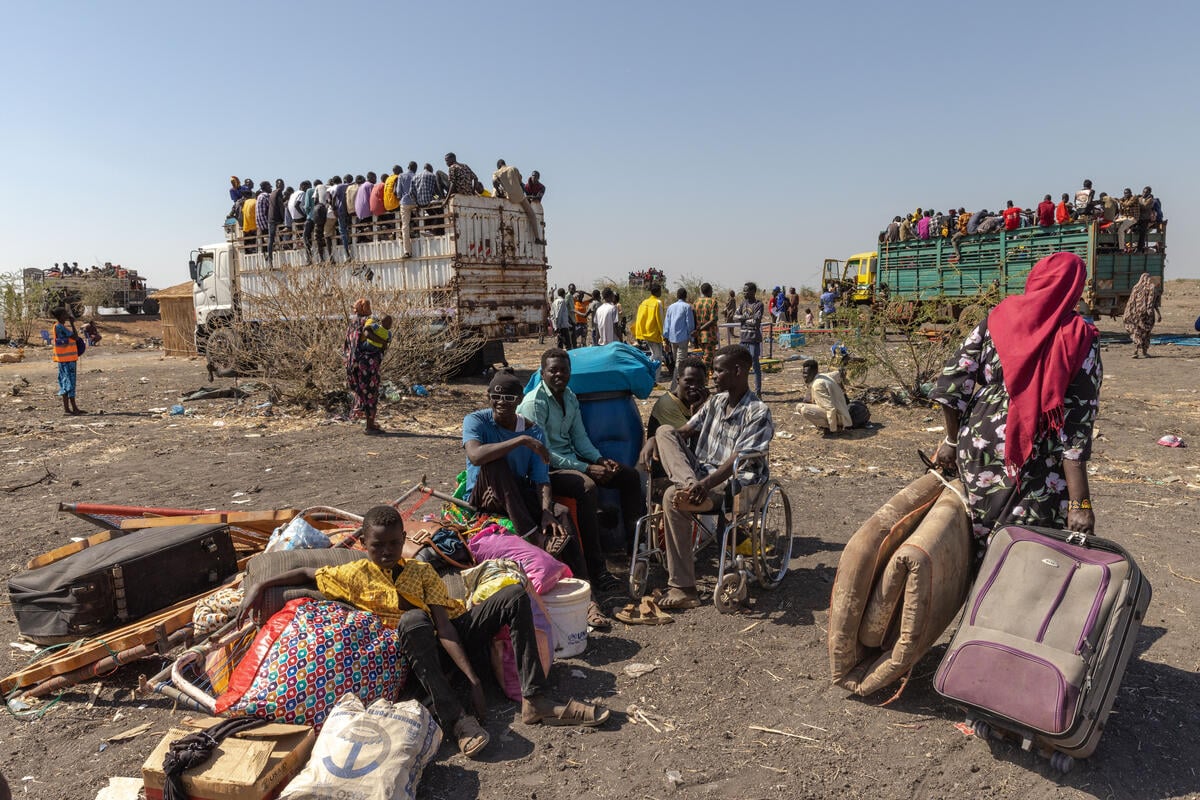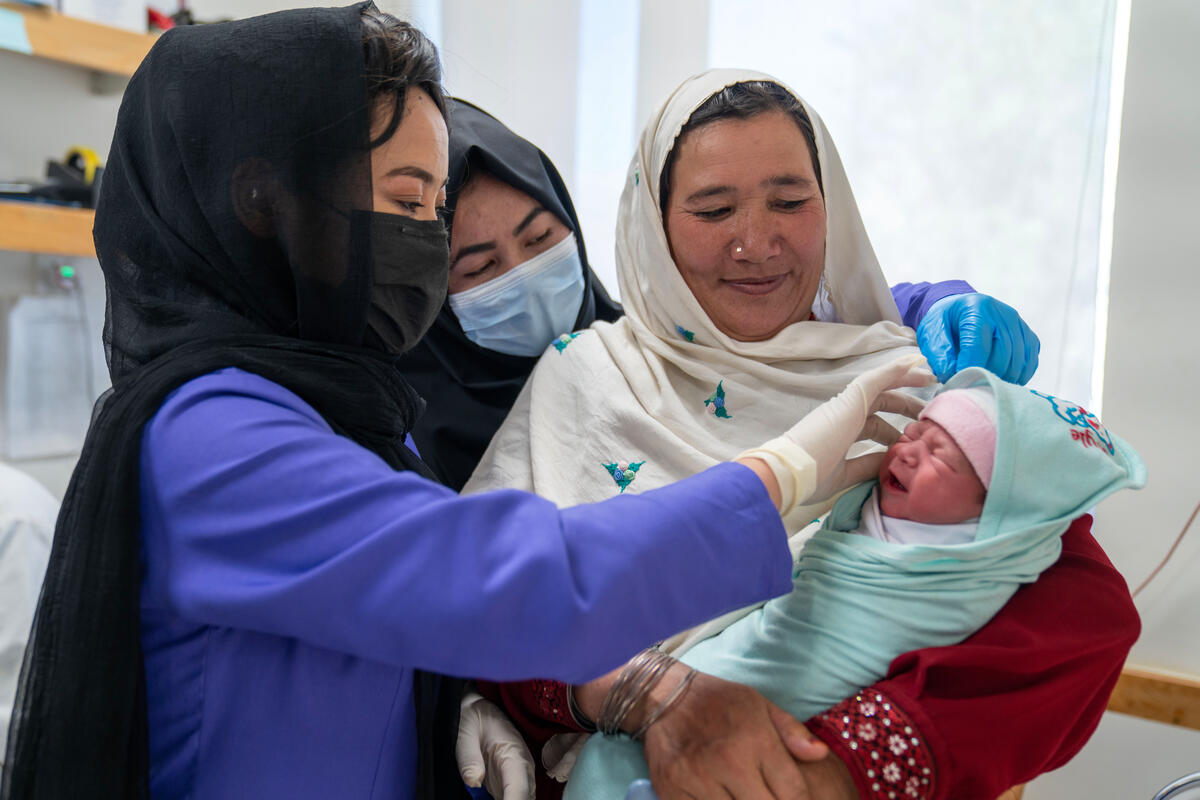Afghanistan Humanitarian Update No. 60
Afghanistan Humanitarian Update No. 60
24 April 2002
At a Glance
- Total refugee returns top 353,000
- Repatriation from Iran gathers pace
- More internally displaced Afghans assisted homewards
- Authorities move to ease ethnic tensions
Total refugee returns top 353,000
More than 353,000 Afghans have returned home in the less than eight weeks since UNHCR began assisting refugees to repatriate in operations coordinated with neighbouring governments and Afghanistan's Interim Authority.
Returns from Pakistan total more than 327,000, while some 17,000 arrivals have been recorded from Iran under a similar return scheme that began on April 9. More than 8,900 Afghans have repatriated from Tajikistan and 18 persons have returned from Turkmenistan.
UNHCR currently operates 14 distribution centres throughout Afghanistan in order to receive as many returnees as possible, with another four planned to open next week. The distribution centres distribute aid packages and wheat flour to returnees and some also serve as cash distribution centres where Afghans get their travel grants.
Returnees receive a travel grant, a package of relief aid from UNHCR and three sacks of wheat from the World Food Programme (WFP).
Pakistan and Iran host more than 3.5 million Afghan refugees. UNHCR expects at least 800,000 of them to go back to Afghanistan this year, along with 400,000 internally displaced persons (IDPs) still within the country.
Repatriation from Iran gathers pace
Some 17,000 Afghan refugees have returned to Afghanistan from Iran since UNHCR and the Bureau for Aliens and Foreign Immigrant Affairs (BAFIA) started a voluntary repatriation programme on April 9.
Heavy rains in parts of western Afghanistan have slowed the pace of the movement, and delayed some returns to Badgis Province. Despite the welcome rains, interest among the Afghans in Iran to return home remains high, with several thousand people approaching registration centres daily.
Tehran's Soleimankhani registration centre, operated by BAFIA and UNHCR, sees more than one thousand Afghans arriving each day seeking to be registered by BAFIA and then interviewed by UNHCR staff who are on hand to ascertain the voluntariness of the operation.
Other BAFIA/UNHCR centres in Mashad, Zahedan, Qom, Esfahan, Kerman, Shiraz, Yazd and Arak are similarly approached by hundreds of Afghans every day registering for the operation. UNHCR plans to open a second centre in Tehran to augment Soleimankhani as soon as a suitable site can be found.
Afghans are allowed to return with unlimited amounts of Iranian Rials and Afghanis, and up to US$1,000 in other currency. They receive free transport from Iran to Herat, where they receive a $10 travel grant, a tarpaulin, blankets, stoves, hygienic supplies, tools and 150 kilogrammes of WFP wheat. The International Organization for Migration (IOM) provides transport for the returnees onwards from the border.
Under the two week-old programme, refugees are repatriating via the Dogharoun/Islam Qala border crossing west of Herat. A second official repatriation corridor from Iran is planned to open shortly, once UNHCR is satisfied that security and stability have returned to Zaranj, in Afghanistan's south-western Nimroz Province.
More internally displaced Afghans assisted homewards
Since December, UNHCR has helped more than 30,000 internally displaced persons (IDPs) return to their homes, a third of the total inter-agency IDP return effort accomplished to date.
The IDPs, estimated to number up to 1.2 million Afghans, are starting to head homewards under an assistance programme similar to those extended to refugees and carried out by UNHCR, the Afghan Ministry of Repatriation and IOM.
UNHCR is leading nationwide efforts to help Afghan IDPs forced from their homes by decades of internal strife and famine to return home and start afresh.
The U.N. refugee agency plans to return 400,000 displaced Afghans this year, but high levels of rehabilitation aid and development assistance for Afghanistan and the Interim Authority remain vital for the operation, as well as continued improvement in the security situation.
Around 14,500 IDPs living for three years in the old Soviet compound in Kabul have gone back to rebuild their homes in the Shomali Plain in central Afghanistan, where they joined 8,000 Afghans who returned to the area beginning in late December from the Panjshir Valley.
In the Bamiyan region, more than 2,000 mostly ethnic Hazara Afghans have returned to 13 villages in the Shaighan Valley region since Monday. They fled fighting in the area last year. Authorities earlier cleared the villages of land mines and unexploded ordnance. UNHCR and its partners expect to return 7,500 persons over the coming days during the first phase of the operation.
This week, the first groups of IDPs - totalling more than 2,000 - began moving out of their tents at Hesar Shahi, home for the last three years to nearly 24,000 Afghans who fled war and drought. They went back to their villages in Nangarhar Province. Returns to Laghman Province had to be put on hold this week due to continuing security concerns in the region.
Last Thursday, 585 IDPs left the south-eastern frontier town of Spin Boldak for Ghazni and Paktika provinces, despite continuing reports of instability in parts of these provinces. IDP camps in Spin Boldak shelter 40,000 Afghans.
Authorities move to ease ethnic tensions
In early April, authorities in Herat changed guards at Maslak camp, which hosts some 117,000 displaced Afghans, following allegations of harassment against minority Pashtuns. The action came after UNHCR alerted officials both in Herat and Kabul to alleged abuses by armed men.
During a meeting with the United Nations High Commissioner for Refugees Ruud Lubbers last week, Chairman Hamid Karzai of the Afghan Interim Administration said the situation of minority Pashtuns in northern Afghanistan had improved. Karzai said this came after he dispatched a mission to look into claims of human rights abuses in the area and to begin a dialogue to promote reconciliation.
UNHCR is dispatching staff to monitor the situation of minorities in the region, including Badghis, Faryab, Balkh, Jawzjan, Samangan, Baghlan, Kunduz and Takhar. With returns gaining momentum, UNHCR is also watching the situation in areas where coalition forces are conducting military operations, including Paktia, Khost, Uruzgan and some parts of Paktika.








